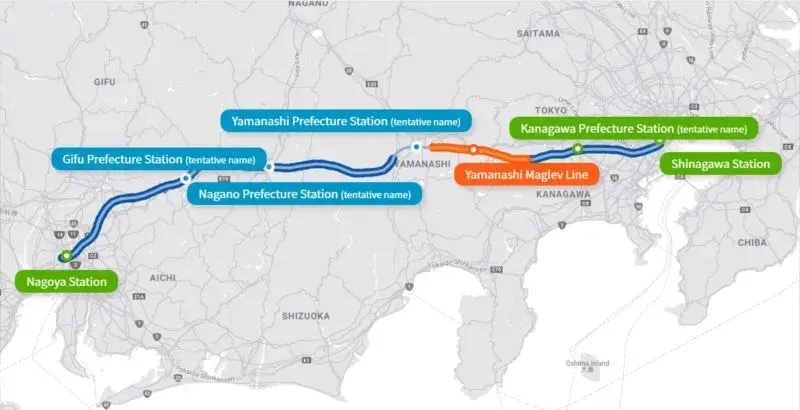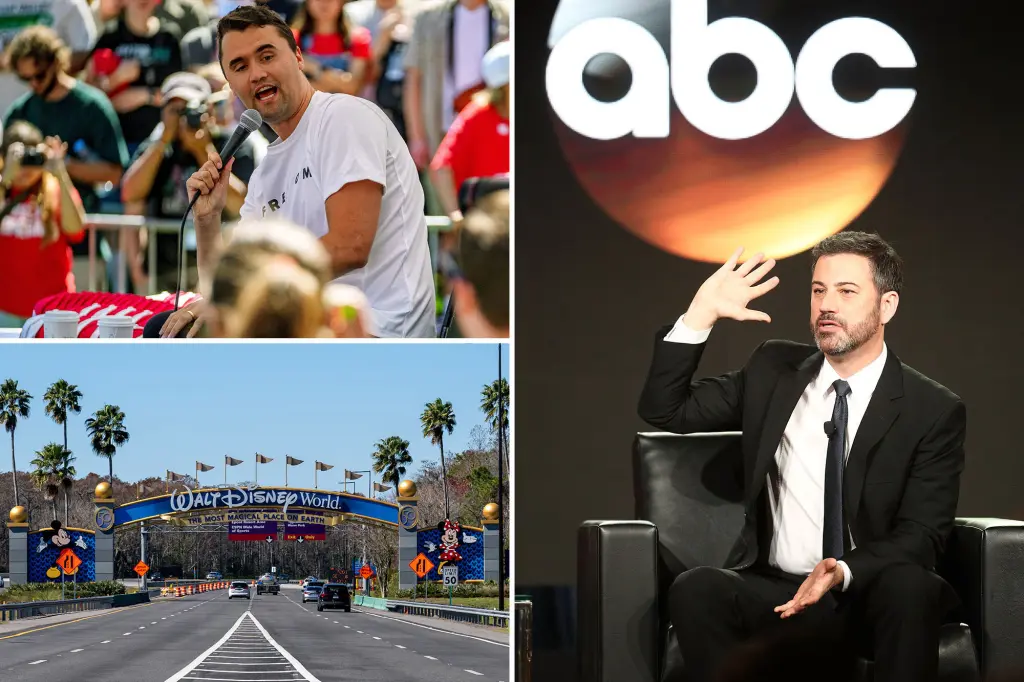
The construction of what is intended to be the world’s fastest train, the Chuo Shinkansen Maglev, which is intended to link Tokyo to Nagoya, with a potential future extension to Osaka, is currently underway in Japan.
A map produced by the Central Japan Railway Company, which is managing the project, shows the proposed route and has been republished online by the official Japan Rail Pass website, a scheme aimed at promoting foreign tourism.
Newsweek contacted the Central Japan Railway Company for comment via online inquiry form on Friday.
Why It Matters
Japan’s Shinkansen high-speed rail network is already extensive, with around 1,800 miles worth of rail lines connecting key cities. The trains, known as bullet trains in English, can travel at speeds of up to 160-200 miles per hour according to the East Japan Railway Company.
Globally, high speed rail is undergoing something of a renaissance, with more than 24,855 miles of such track operational in China in 2023 according to the International Union of Railways.
In the United States construction has begun on California high speed rail, which is intended to eventually connect Los Angeles to San Francisco, along with Brightline West that will link Las Vegas to southern California.
What To Know
The Chuo Shinkansen Maglev line is currently under construction between Tokyo and Nagoya, with a provisional plan for a further extension to Osaka.
Once completed it is expected to be the fastest high-speed rail line in the world, with a maximum operational speed of 314 miles per hour.
Superconducting magnetic, or maglev, trains were developed in the 1970s by the Central Japan Railway Company and the Railway Technical Research Institute.
Unlike conventional locomotives maglev trains work by using powerful magnets to lift the train above the track, eliminating friction from wheels. Electromagnets or superconducting magnets provide both levitation and propulsion, pushing and pulling the train along a guideway. This allows maglevs to travel extremely smoothly at very high speeds.
However, the technology remains controversial because of its cost and construction times.
Speaking to Newsweek Andy Kunz, president of the U.S. High Speed Rail Association (USHSRA), which advocates for high-speed rail (HSR), said: “Maglev is NOT the future of rail in the world. Its tech costs as much as five times more than conventional HSR and it uses a massive amount of energy to operate—far more than standard conventional HSR. The maintenance of maglev systems is far more intense and costly than maintenance of standard HSR because of the need to keep all the magnets and infrastructure in perfect alignment.”
Kunz added maglev’s main problem is it is “not off-the shelf tech” meaning there are “no manufacturers cranking out trains or system components.” Consequently the USHSRA doesn’t advocate for Maglev lines in the U.S.
What People Are Saying
Speaking to Newsweek Professor Hualiang (Harry) Teng, a high-speed rail expert at the University of Nevada, said: “Building the maglev high speed rail in Japan is very important for technology and economic development. It will demonstrate how important travel time is in economic development by cutting travel time by even minutes. It would promote the idea of building a second line connecting New York City and Washington D.C., which would change the distribution of city centers in the east coast. Actually, China is building their second line connecting Beijing and Shanghai, two largest population centers in China.”
Professor Mehdi Ahmadian, a mechanical engineering expert at Virginia Tech, told Newsweek: “Invented by the Germans, maglev trains have been under development in Japan and other countries in Europe for decades. Remaining elevated while traveling at high speeds remains one of man’s dreams. Regarding maglev trains, some of the challenges that engineers and scientists have attempted to overcome have included generating sufficient forces to keep heavy railcars levitated while traveling at high speeds.
“This requires overcoming significant challenges in designing electromagnetic circuits that can function at ambient temperatures. Other challenges include ensuring efficiency and passenger safety during the railcar’s lift-up and return to the rail. Although many of these challenges have been overcome, more testing and development are needed to ensure further safety and operational efficiency. Additionally, the significant investments in making maglev a reality are a factor in delaying some of the projects, such as the Japanese Chuo Shinkansen Maglev line.”
Addressing Newsweek Professor Mark Hansen, a transportation expert at UC Berkeley, said: “These maximum speeds are impressive but keep in mind the greater the maximum speed the longer it takes to accelerate and decelerate. The distances between stations must be very long in order for the trains to actually be operating at the maximum for a significant length of time.”
What Happens Next
Initially the Chuo Shinkansen Maglev rail line between Tokyo and Nagoya was expected to open in 2027 but in March 2024 it was announced this had been pushed back and would likely be some time after 2034. Construction work on the project continues.
Full Interview with USHSRA president Andy Kunz
“Maglev is a boutique technology that the HSR world has bypassed. The first maglev test track was in Germany and they spent years trying to export it to other nations, including here. China bit and set up a tiny system that’s around 25 miles long. When they started planning their 40,000km system, they evaluated their maglev as an option, and decided not to use that tech, and instead went with the readily available technology of steel wheel on steel rails.
“They have since built 40,000km of this conventional rail. Right now there is around 60,000km of HSR lines around the world, all of it is steel wheel tech, not maglev (other than the tiny Chinese system, and the tiny Japanese test track).
“Maglev is NOT the future of rail in the world. Its tech cost as much as five times more than conventional HSR and uses a massive amount of energy to operate—far more than standard conventional HSR. The maintenance of maglev systems is far more intense and costly than maintenance of standard HSR because of the need to keep all the magnets and infrastructure in perfect alignment.
“We don’t support maglev as its been ‘the next great technology’ for more than 40 years, yet none built. America has fallen for this gimmick repeated over the decades, while we built nothing.”



